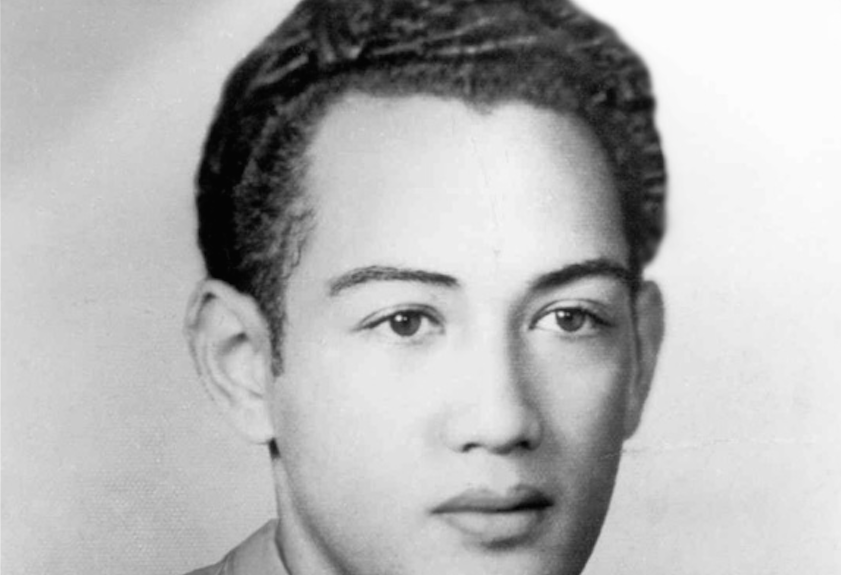Okay, we know it’s saying a lot. So many brave men and women have served in the United States Army over the course of its illustrious 240-year history, most of them easily classified as “badass”, among many other superlatives.
But the story of Private First Class Herbert K. Pilila’au and what he did to earn the prestigious Medal of Honor posthumously will absolutely floor you. It’s something that resembles folklore — or even Greek mythology.
Pilila’au, who was born and raised in Hawaii, was drafted into the Army after graduating high school in 1948, and did his basic training at Fort Shafter, located in the “Aloha State”. Ironically, he almost didn’t fight at all — for a brief moment he declared himself a conscientious objector due to his Christian religion and wariness in regards to killing an enemy in battle — but ultimately changed his mind.
Thusly changing the course of American military history forever. And that’s not hyperbole. Just read this short account (via Wikipedia) of what he did after being sent to Korea in 1951 and assigned to Company C, 23rd Infantry Regiment, 2nd Infantry Division:
On September 17, 1951, Company C and two other companies were tasked with capturing Hill 931, one of Heartbreak Ridge’s two identifiable peaks, from North Korean forces. When Company C’s attack stalled on a ridgeline which ran south from the main peak, Pililaʻau’s platoon set up a defensive perimeter ahead of the rest of the company. With the help of artillery, mortar, and heavy machine gun support, the platoon easily held off a series of probing assaults which began in the mid-afternoon.
At about 10:00 p.m., two battalions of the 13th Infantry Regiment, 6th Division, Korean People’s Army, began a concerted attack on the position. With North Korean artillery striking close by and ammunition running low, the platoon caught in cross fire in the rice paddies received permission to withdraw and rejoin the main body of the company as quickly as possible. Pililaʻau’s squad was assigned to stay back momentarily and cover the retreat.
Eventually, only Pililaʻau and his squad leader remained at the platoon’s original position. The squad leader and forward observer Lt. Richard Hagar called in artillery fire continuously ahead of Pililaʻau, trying to cover him while he moved also calling fire on the two hill tops, while Pililaʻau continued to fight off the attack. At one point, Hagar became afraid that the artillery was too close and that he hit Pililaʻau.
Hagar called out for him, and Pililaʻau said he was ok and told Hagar to keep going.
After exhausting the ammunition for his BAR, he began throwing hand grenades until those too were gone. As some of his comrades watched from their new position further down the ridge, Pililaʻau threw rocks at the attackers before charging at them, wielding his trench knife with one hand and punching with the other. He was soon surrounded and killed by bayonet. At this point Hagar fell back to rejoin his troops.
When his platoon retook the position the next day, they found forty dead North Korean soldiers around his body.
Pilila’au was just 22 years old.
Today, a U.S. Navy Military Sealift Command cargo ship is named in honor of the great American soldier. The USNS Pililaau:
He was recognized as a Medal of Honor recipient on June 18, 1952. He is buried at the National Memorial Cemetery of the Pacific in Honolulu.





































